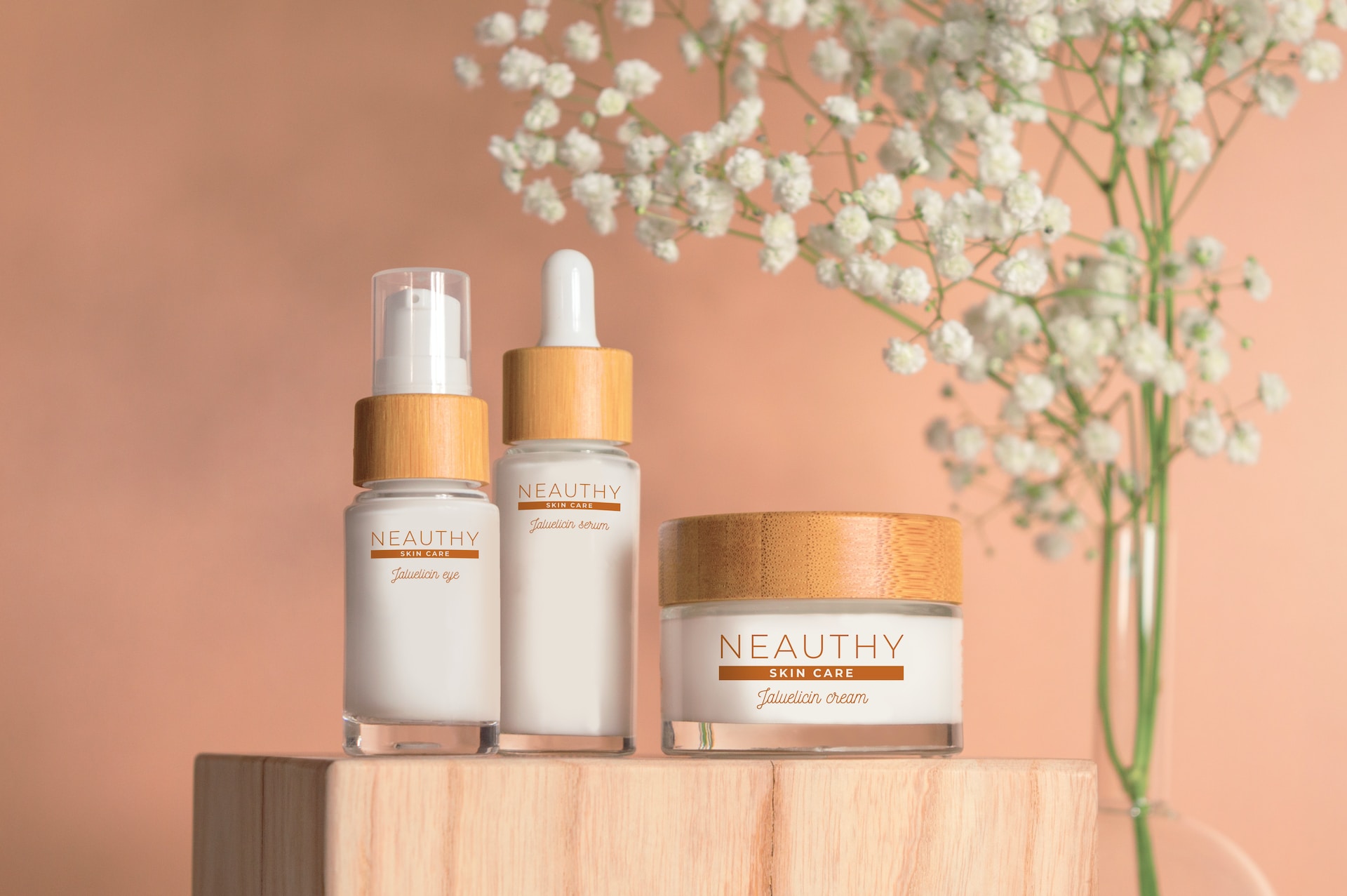FASHION
Custom hoodies canada

Family Reunions area unit most fun and it’s one in every of the family celebrations that everyone is with excitement looking forward to. therefore if you’re one of every one of the excited members of the family for your reunion, the preparation plans area unit sure on your mind straight away. the primary thought within the preparation within the venue, it’s one thing that every one the eldest within the family ought to decide. however, if you made the decision that you simply are {going to be|are} going to a rustic within the winter season, this text has some suggestions for you. therefore scan on and you’ll very love the thought.
Customized sweatshirts for the winter meeting
Some families like to pay for their gatherings in the summer because they may prefer to go to the beach or the spa. But others come to cold countries to experience certain climates, which means they need warm clothes to wear. Because the family reunion t-shirt reminder should not be forgotten between preparations and if you combine winter wear with a reunion t-shirt, for example, personalized hoodies in the northern Yankee country. You bought a family reunion t-shirt for protection from the cold.
An answer to the coldness of your meeting
The T-shirts are too thin to wear in winter, although she paired them with jackets. As such, North Yank Nations custom sweatshirts are the solution to the cold during your Gathering events. This will be acceptable clothing for everyone, especially for the elderly and young people. You will order it along with your preferred content from any print shop in the country, so you don’t have to put in much effort to set it up. All you have to do to do it once is put it on and it’s easy to put it on in due time.
FASHION
Swarowski: Shining in the World of Crystals

In the realm of luxury and elegance, few names shine as brightly as Swarowski. Renowned for its exquisite crystal creations, Swarowski has carved a niche for itself in the fashion, jewelry, and home decor industries. From dazzling jewelry pieces to stunning figurines, Swarovski’s craftsmanship and attention to detail have captivated hearts worldwide.
Swarowski History and Legacy
Founded in 1895 by Daniel Swarovski, a visionary entrepreneur with a passion for innovation, Swarovski has evolved into a global powerhouse synonymous with luxury and sophistication. What started as a small crystal cutting factory in Austria has grown into a prestigious brand with a rich heritage spanning over a century.
Swarowski Products: A Symphony of Sparkle
At the heart of Swarowski allure lies its diverse range of products, each meticulously crafted to perfection. From sparkling crystal jewelry adorned with intricate designs to exquisite home decor pieces that add a touch of glamour to any space, Swarovski offers something for every discerning taste.
Swarowski Crystal Jewelry: Elegance Personified
Swarowski crystal jewelry collection is a testament to timeless elegance and refined craftsmanship. Whether it’s a dazzling necklace, a shimmering bracelet, or a pair of exquisite earrings, each piece is meticulously designed to capture the essence of luxury and sophistication.
Home Decor: Transforming Spaces
In addition to its stunning jewelry line, Swarowski also offers an exquisite range of home decor items that elevate the aesthetic appeal of any living space. From sparkling crystal vases to intricately crafted figurines, Swarovski’s home decor collection adds a touch of glamour and sophistication to every corner of your home.
Craftsmanship and Quality: A Cut Above the Rest
What sets Swarovski apart from its competitors is its unwavering commitment to craftsmanship and quality. Each Swarowski crystal undergoes a precise cutting process, ensuring unparalleled clarity and brilliance. Moreover, Swarovski’s meticulous attention to detail and relentless pursuit of perfection result in products that exude unparalleled beauty and elegance.
Swarowski Precision Cutting: The Art of Perfection
Swarowski master craftsmen employ advanced cutting techniques to transform raw crystals into exquisite works of art. Each crystal is cut with precision to enhance its brilliance and clarity, resulting in a finished product that sparkles like no other.
Swarowski Material Selection: The Finest Ingredients
In addition to precision cutting, Swarovski also places great emphasis on the quality of its materials. Only the finest raw materials are used in the production process, ensuring that every Swarovski product meets the highest standards of excellence.
Fashion Industry Influence: Setting Trends and Redefining Glamour
Swarowski influence extends far beyond the realms of jewelry and home decor, with the brand making a significant impact in the fashion industry. Renowned designers and fashion houses frequently collaborate with Swarovski to incorporate its dazzling crystals into their creations, resulting in stunning pieces that grace the runways of fashion capitals around the world.
Collaborations with Designers: A Fusion of Creativity
Swarowski collaborations with top designers have led to the creation of iconic pieces that have redefined luxury fashion. From statement accessories to embellished couture garments, Swarovski crystals add a touch of opulence and glamour to every design.
Red Carpet Appearances: Hollywood’s Favorite Accessory
Swarowski crystals have become a staple on the red carpet, adorning the attire of Hollywood’s biggest stars. Celebrities worldwide choose Swarovski jewelry to add a touch of sparkle to their glamorous ensembles, making it the ultimate accessory for any star-studded event.
Swarowski in Pop Culture: A Symbol of Prestige and Luxury
Beyond the realms of fashion and entertainment, Swarowski has cemented its place in popular culture as a symbol of prestige and luxury. From celebrity endorsements to prominent placements in movies and TV shows, Swarowski’s iconic crystals continue to captivate audiences worldwide.
Celebrity Endorsements: A Stamp of Approval
Countless celebrities, from Hollywood A-listers to international superstars, have endorsed Swarovski and proudly showcased its stunning creations on various occasions. Their patronage serves as a testament to Swarovski’s status as a coveted brand synonymous with luxury and elegance.
Inclusion in Movies and TV Shows: A Touch of Glamour
Swarovski crystals have made appearances in numerous movies and TV shows, adding a touch of glamour and sophistication to the silver screen. From dazzling jewelry pieces to eye-catching props, Swarovski’s crystals are a favorite choice among filmmakers and costume designers looking to elevate their creations.
Sustainability Efforts: A Commitment to the Planet
Despite its luxury status, Swarovski remains committed to sustainability and environmental responsibility. The brand actively seeks to minimize its environmental footprint through responsible sourcing practices and initiatives aimed at reducing waste and conserving resources.
Responsible Sourcing: Ethical Practices
Swarowski places a strong emphasis on ethical sourcing, ensuring that its crystals are sourced responsibly and sustainably. By partnering with suppliers who adhere to strict environmental and labor standards, Swarovski strives to uphold the highest ethical principles throughout its supply chain.
Environmental Initiatives: Preserving the Planet
In addition to responsible sourcing, Swarovski also invests in various environmental initiatives aimed at reducing its impact on the planet. From energy-efficient manufacturing processes to waste reduction programs, Swarovski is dedicated to preserving the environment for future generations.
Global Reach and Presence: A Brand with Worldwide Appeal
With a presence in over 170 countries and a network of flagship stores and boutiques worldwide, Swarowski has established itself as a global leader in the luxury market. Whether you’re in Paris, New York, or Tokyo, you’re never far from a Swarovski store where you can experience the brand’s exquisite creations firsthand.
Worldwide Retail Stores: Experiencing Luxury Up Close
Swarowski flagship stores offer customers a unique shopping experience, allowing them to explore the brand’s extensive collection of crystal jewelry, home decor, and accessories in person. With knowledgeable staff on hand to assist with product selection and styling advice, a visit to a Swarowski store is nothing short of magical.
Online Presence: Bringing Luxury to Your Doorstep
In addition to its physical stores, Swarowski also boasts a robust online presence, allowing customers to shop for their favorite crystal creations from the comfort of their homes. With secure payment options and worldwide shipping, Swarovski’s online store makes luxury accessible to customers around the globe.
Customer Experience and Loyalty: Putting Customers First
At Swarowski, customer satisfaction is paramount, and the brand goes above and beyond to ensure that every customer enjoys a memorable shopping experience. From personalized service to exclusive membership programs, Swarovski rewards loyalty and continuously strives to exceed customer expectations.
Membership Programs: Exclusive Benefits
Swarowski offers exclusive membership programs that provide members with access to special discounts, VIP events, and personalized rewards. Whether you’re a frequent shopper or a devoted collector, Swarowski membership programs offer a host of benefits designed to enhance your shopping experience.
Customer Service Excellence: Going the Extra Mile
From personalized styling advice to hassle-free returns, Swarovski’s dedicated customer service team is committed to providing exceptional service at every touchpoint. Whether you have a question about a product or need assistance with an order, Swarovski’s friendly and knowledgeable staff are always on hand to help.
Innovation and Technology: Pioneering the Future of Crystals
As a leader in the crystal industry, Swarovski continues to push the boundaries of innovation and technology, exploring new ways to enhance the beauty and versatility of its crystals. From advancements in crystal production techniques to integration with wearable technology, Swarovski remains at the forefront of innovation, ensuring that its creations continue to dazzle and delight.
Advancements in Crystal Production: Pushing the Boundaries
Swarovski invests heavily in research and development to continually improve its crystal production processes. By harnessing the latest technologies and techniques, Swarovski is able to create crystals with unparalleled brilliance, clarity, and durability, setting new standards of excellence in the industry.
Integration with Wearable Tech: Where Fashion Meets Function
In addition to its traditional crystal creations, Swarovski is also exploring the intersection of fashion and technology by integrating crystals into wearable tech devices. From smartwatches to fitness trackers, Swarovski’s crystals add a touch of glamour and sophistication to everyday gadgets, blurring the lines between fashion and function.
Value Proposition of Swarowski: Luxury Redefined
What sets Swarovski apart from its competitors is its unique value proposition, which combines luxury with affordability, making it accessible to a wide range of consumers. Whether you’re treating yourself to a dazzling piece of jewelry or searching for the perfect gift for a loved one, Swarovski offers unparalleled quality and craftsmanship at an affordable price point.
Luxury vs. Affordability: The Best of Both Worlds
While Swarovski is synonymous with luxury and sophistication, it also prides itself on offering affordable luxury to its customers. By leveraging economies of scale and efficient manufacturing processes, Swarovski is able to offer high-quality crystal creations at a fraction of the price of traditional luxury brands, making luxury accessible to all.
Unique Gifting Options: Making Every Occasion Special
With its diverse range of products and timeless designs, Swarovski offers the perfect gift for every occasion. Whether it’s a sparkling necklace for a special anniversary or a whimsical figurine for a birthday celebration, Swarovski’s creations are sure to delight and enchant the recipient, making every moment truly memorable.
Challenges and Competition: Navigating the Competitive Landscape
Despite its global success, Swarovski faces its fair share of challenges in the competitive luxury market. From counterfeit products to increasing competition from emerging brands, Swarovski must continuously innovate and adapt to stay ahead of the curve.
Counterfeiting Issues: Protecting the Brand
One of the biggest challenges facing Swarovski is the proliferation of counterfeit products that seek to imitate its iconic designs. To combat this threat, Swarovski employs strict anti-counterfeiting measures and works closely with law enforcement agencies to identify and prosecute counterfeiters, protecting both its brand reputation and the integrity of its products.
Competitors in the Market: Staying Ahead of the Curve
In addition to counterfeit products, Swarovski also faces stiff competition from other luxury brands vying for a share of the market. From traditional jewelry houses to emerging designers, Swarovski must continuously innovate and differentiate itself to maintain its position as a leader in the industry.
Future Outlook: Shaping the Future of Luxury
Looking ahead, Swarovski remains committed to pushing the boundaries of innovation and creativity, ensuring that its brand continues to shine brightly in the world of crystals. With plans for expansion and a steadfast dedication to quality and craftsmanship, Swarovski is poised to shape the future of luxury for generations to come.
Conclusion
In conclusion, Swarovski stands as a beacon of luxury and sophistication in the world of crystals. With its exquisite craftsmanship, innovative designs, and unwavering commitment to quality, Swarovski has captured the hearts of millions around the globe. From dazzling jewelry to stunning home decor, Swarovski’s creations continue to enchant and inspire, making every moment sparkle with elegance and glamour.
FAQs
- How are Swarowski crystals different from other crystals?Swarowski crystals are known for their unparalleled brilliance and clarity, thanks to a precise cutting process that enhances their sparkle. Unlike natural crystals, Swarowski crystals undergo rigorous quality control measures to ensure consistency and perfection.
- Are Swarowski products expensive?While Swarowski products are considered luxury items, they are often more affordable than traditional fine jewelry brands. Swarowski prides itself on offering high-quality crystal creations at a fraction of the price of luxury counterparts, making them accessible to a wide range of consumers.
- Can Swarowski jewelry be repaired?Yes, Swarowski offers repair services for damaged or broken jewelry pieces. Customers can contact Swarovski customer service or visit a Swarowski store for assistance with repairs or replacements.
- How can I identify genuine Swarowski products?Genuine Swarowski products are stamped with the Swarovski logo or feature a small swan emblem engraved on the crystal. Additionally, Swarowski products come with a certificate of authenticity to verify their genuineness.
- Does Swarowski offer customization services?Yes, Swarowski offers customization services for select products, allowing customers to personalize their crystal creations with engraving or embellishments. Contact Swarowski customer service or visit a Swarovski store to inquire about customization options.
FASHION
Unlocking the Secrets: Understanding if Noxzema Expires

In the realm of skincare, Noxzema has been a timeless companion for many, cherished for its refreshing properties. However, as with any product, questions arise, and one common query is whether Noxzema has an expiration date. In this comprehensive guide, we delve into the depths of this, deciphering the nuances surrounding its shelf life.
Does Noxzema Expire? Demystifying the Myth
Noxzema, known for its iconic blue jar, is a classic in skincare routines. The question of its expiration is a pertinent one. The straightforward answer is yes, Noxzema does have an expiration date. While it doesn’t necessarily go bad in the traditional sense, its efficacy can diminish over time.
Understanding the Expiration Dynamics
Ingredients Matter
Noxzema’s composition is crucial in determining its shelf life. The amalgamation of menthol, eucalyptus, and camphor, among other ingredients, contributes to its potency. Over time, these components may lose their effectiveness, impacting the overall performance of the product.
Storage Conditions
Proper storage is paramount to extend this lifespan. Storing it in a cool, dark place can slow down the aging process, preserving its efficacy for a more extended period. Exposure to sunlight and fluctuating temperatures can expedite the expiration process.
Signs of Expired Noxzema
Recognizing when this has reached the end of its prime is essential. Here are key indicators to look out for:
Altered Smell
A noticeable change in scent can be a telltale sign of expiration. If the familiar, invigorating aroma of this transforms into something unpleasant or rancid, it’s time to bid adieu.
Texture Shift
Expired Noxzema may undergo changes in texture. If it becomes grainy, separated, or loses its original consistency, it’s a clear signal that the product has surpassed its optimal period.
Reduced Efficacy
The primary purpose of Noxzema is to soothe and cleanse the skin. If you notice a decline in its effectiveness, such as reduced cooling sensations or a lack of freshness upon application, it’s a strong indication that the product is past its prime.
Maximizing Noxzema’s Shelf Life
Mindful Purchase
When acquiring Noxzema, be conscious of its manufacturing date. Opt for the freshest batch available, ensuring a more extended period of optimal performance.
Seal Integrity
Ensuring the jar’s seal is intact when purchasing is crucial. A broken or compromised seal can expose the product to air and contaminants, accelerating the expiration process.
Routine Check
Regularly inspecting your this for any signs of expiration ensures you use it at its peak. A proactive approach can save you from unknowingly applying a product that may no longer provide the desired benefits.
Optimal Application Techniques
Achieving the maximum benefits from your this involves more than just understanding its expiration. Here are some practical tips for optimal application:
Gentle Massage
When applying this, adopt a gentle massage technique. This not only enhances absorption but also ensures even distribution, optimizing its effectiveness.
Layering with Other Products
Consider incorporating this strategically into your skincare routine. Layering it after lighter products but before heavier creams can enhance its absorption, allowing its active ingredients to penetrate effectively.
Noxzema’s Versatility Unveiled
Beyond its traditional use as a facial cleanser, this unveils a myriad of applications, showcasing its versatility and making it a staple in various beauty routines.
Spot Treatment
Harness the power of Noxzema as a spot treatment for blemishes. Its anti-inflammatory properties can aid in reducing redness and swelling, offering targeted relief.
Refreshing Mask
Transform your Noxzema into a refreshing mask by applying a slightly thicker layer and letting it sit for 10-15 minutes. This quick DIY treatment can invigorate the skin and provide a rejuvenating boost.
Addressing Common Concerns
Allergies and Sensitivities
For those with sensitive skin or known allergies, it’s crucial to perform a patch test before incorporating this into your routine. While generally well-tolerated, individual reactions can vary.
Consulting with Dermatologists
If uncertainties persist or you have specific skin concerns, consulting with a dermatologist is advisable. They can provide personalized insights based on your skin type and condition.
The Noxzema Leg
Conclusion
In the ever-evolving landscape of skincare, understanding the longevity of your favorite products is key. Noxzema, a staple for generations, holds its own expiration nuances. By grasping the signs and implementing best practices for storage and usage, you can ensure that your Noxzema experience remains as delightful as the first time you unscrewed that iconic
FASHION
How Long Does Manic Panic Stay In Your Hair?

If you love experimenting with funky hair colors, then you likely already know about Manic Panic – the iconic semi-permanent hair dye brand. But before you slather on that Electric Lizard green or Cotton Candy pink cream, the big question is…How long does Manic Panic last on brown hair?
Whether you have blonde hair, brown hair, or black hair, this article will give you an in-depth understanding of the average Manic Panic duration based on hair type and color. Plus pro tips to make Manic Panic Last longer On Brown Hair or any shade!
What Is Manic Panic Hair Dye?
Manic Panic is a cult classic semi-permanent hair color cream that deposits direct dyes onto the hair without any peroxide or ammonia. Made of natural ingredients, it gently stains the hair shaft adding vibrant fantasy colors that fade out slowly over 4 to 6 weeks depending on your base shade and porosity.
It conditions hair leaving it soft, strong, and healthier than bleach-based permanent dyes would. The thickness of the cream makes the application messy requiring gloves. But it does not damage hair significantly even with repeated use.
How Long Does Manic Panic Last?
On average, Manic Panic lasts anywhere between 4 to 6 weeks based on the condition, texture, and color of your hair:
| Virgin Hair | 6 to 8 weeks |
| Bleached or Light Blonde Hair | 5 to 6 weeks |
| Medium to Dark Blonde Hair | 4 to 5 weeks |
| Light or Medium Brown Hair | 3 to 4 weeks |
| Naturally Black or Dark Brown Hair | 2 to 3 weeks |
As you go darker on the spectrum from virgin white hair to black hair, the longevity of Manic Panic reduces. Light hair has greater lifting capacity allowing the brighter colors to soak in deeply and stay vibrant longer. Darker pigments limit light absorption leading to faster fading.
How Long Does Manic Panic Last On Brown Hair?
For those with medium to dark brown hair wondering specifically how long the fun colors would pop – expect an average Manic Panic duration of 3 to 4 weeks on brown hair. Here is a more detailed look:
| Light Brown Hair | 4 weeks |
| Medium Golden Brown Hair | 3 weeks |
| Dark Chestnut Brown Hair | 2 weeks |
| Blackish Brown Hair | 2 weeks |
The warmth of underlying brown, red, or gold tones will alter how the cooler fantasy shades show up and wear over time. Warmer hair tends to fade Manic Panic faster than neutral or ashy tones in hair. So cooler brunettes can make the colors last a week longer.
Factors That Influence Manic Panic Duration
What determines whether Manic Panic will last 2 weeks or 8 glorious weeks in your hair? Here are the key factors at play:
1. Natural Hair Color Base
As explained above, the lighter your bases, the longer the vivids last. Pre-lightening is a must for brunettes and raven-haired gals.
2. Color Combinations
Violet, blue, and green-based Manic Panic shades cling longer than warmer yellow, orange, or red-based ones on all hair types.
3. Hair Porosity
Porous, damaged hair absorbs semi-perm color deeper extending wear time. But it can fade unevenly. Healthier hair shows a truer color but often washes out faster.
4. Exposure To Elements
Frequent swimming, salt sprays, chlorine, and sun exposure cause faster fading than avoiding these elements would.
5. Product Buildup
Too much hair styling product residue prevents the dye from penetrating optimally. Clarify hair before coloring.
6. Frequency Of Washes
Manic Panic lasts longest when you wash hair least often, using cold water and sulfate-free shampoo. Washing too frequently fades color quickly.
7. Type Of Shampoo
Sulfate-free cleansers retain vibrant color better. Harsh surfactants strip color molecules driving faster fading.
Tips To Make Manic Panic Last Longer
Do you wish to extend the lifespan of your fabulous Manic Panic hair color for as long as possible? Here are handy tricks to lock in that bright shade:
● Deep condition hair intensely before bleaching and coloring to minimize damage from processing. Healthy hair holds onto deposit-only dye longer.
● Use a protein filler before dyeing, especially if the hair is porous and overprocessed. This allows better cuticle closure and color penetration.
● Opt for darker Manic Panic shades like Deep Purple, Hot Hot Pink, or Blue Moon, which have greater staining capacities suited for plainer or warmer bases underneath.
● Rinse with very cold water to seal in moisture and deposit color pigments deeper into the hair shaft during washes.
● Shampoo minimally just once a week using only lukewarm water otherwise. Daily cleansing accelerates cuticle opening causing faster fading.
● Invest in a nourishing, sulfate-free color-safe shampoo and conditioner regimen. Alternate with dry shampoo between washes.
● Apply protective styling creams with UV filters before heat styling tools to minimize color degradation from hot tool abrasion and environmental factors. Minimize heat styling to once a week only.
● Refresh your Manic Panic hue every 3-4 weeks by mixing some semi-permanent dye into your conditioner and leaving it on the lengths as a revitalizing hair mask.
● Sleep on a silk pillowcase to avoid linens absorbing moisture and color from hair ends overnight. Keep lengths tied up in protective styles.
● Consider adding semi-permanent red or pink dye on top of faded shades to neutralize and extend overall wear time rather than fully stripping things off which damages hair. This color correction technique transitions you from blue to purple to violet seamlessly.
● Record exactly when you dyed your hair which Manic Panic shade plus how long it lasted you. This helps better anticipate when to top up color for maximizing longevity following the round.
In Summary
Manic Panic serves up party-perfect fantasy hair color without major damage risk. On average expect semi-permanent colors to last between 4 to 6 weeks based on your hair type and condition. Pre-lightening boosts wear time as does caring for hair gently with minimal washing, heat styling, and chemical processing once colored. Combining color theory with protective measures can help you get the most mileage out of Manic Panic dye!
-

 HEALTH2 years ago
HEALTH2 years agoDr. Naval Parikh: Thyroid Disease Signs, Symptoms & Treatment Options
-

 HEALTH2 years ago
HEALTH2 years agoDr. Naval Parikh: Back Injuries, Types, Causes, Symptoms and Treatment
-

 FASHION12 months ago
FASHION12 months agoBest Color Shoes for Men: Making a Style Statement
-

 TECH2 years ago
TECH2 years agoHow to Turn Flashlight On iPhone & Off, 3 Easy Ways
-

 Celebrity2 years ago
Celebrity2 years agoDay 3 of Spring 2016 New York Fashion Week’s most inspiring
-

 GAMES2 years ago
GAMES2 years agoAbout Tekken 3
-

 APPS2 years ago
APPS2 years agoY2mate download videos from YouTube Facebook etc
-

 HEALTH8 months ago
HEALTH8 months agoTop 5 Best Activities For Well being




